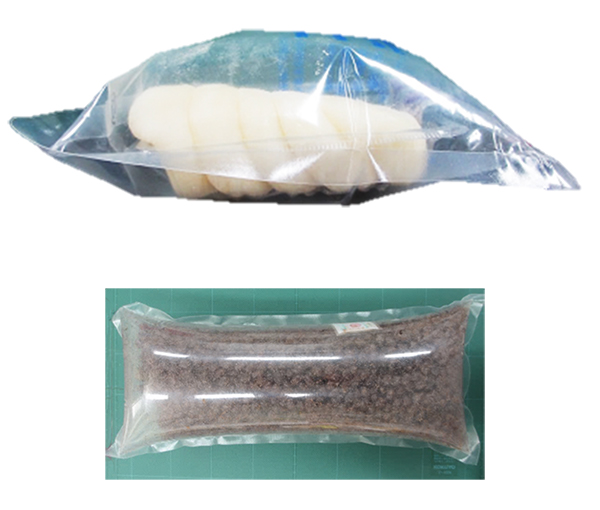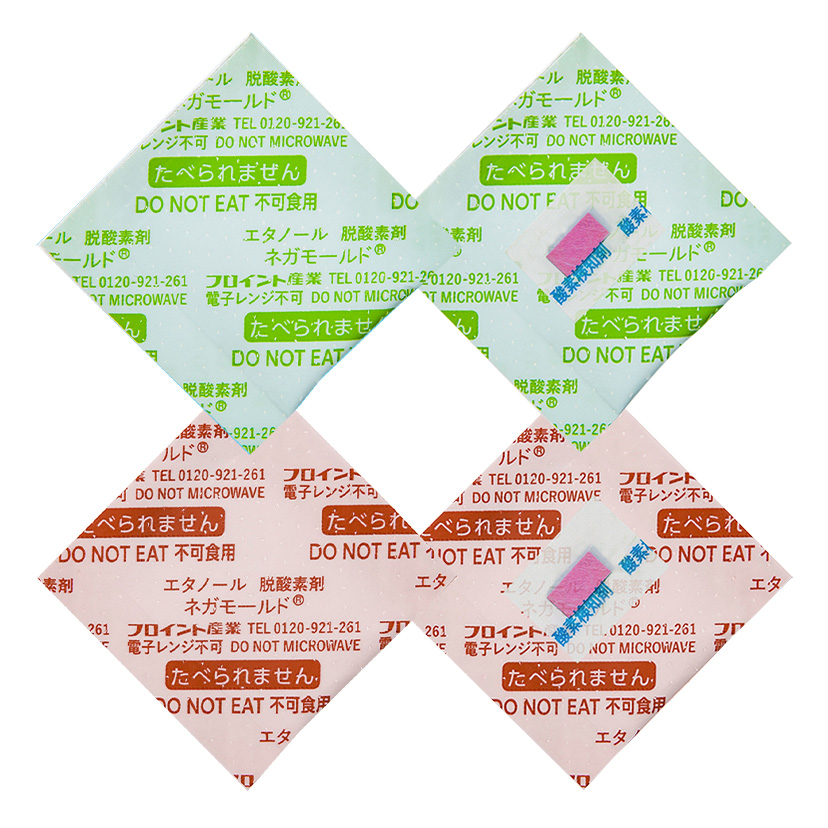Measures to prevent bags swelling due to fermentation – Prevention of food spoilage by yeast, lactic acid bacteria, etc. – Food preservative 2022.06.22

Have you ever had problems with food products such as bakery, pastry, mooncake, dorayaki and other confectionery, pizza crust, pita, tortilla, noodles, dried fruits, and rice cakes (mochi) where the bag swells during storage, resulting in significant flavor loss and stickiness?
This article explains the causes of bag swelling and countermeasures against it.
- Changes in atmospheric pressure
When moving from level ground to a high altitude, such as when climbing a mountain, a bag of potato chips will swell up.
This swelling is due to changes in atmospheric pressure.
On level ground, the bag does not swell because the air in the bag is held back by atmospheric pressure.
However, at high altitudes, where atmospheric pressure is low, this force becomes weaker, so the air pressure inside the bag is higher, and the bag swells as its volume increases.As the cause is the change in air volume, it has little effect on food flavor. - Changes in temperature
Air volume also changes with temperature. When air is heated, thermal energy increases and the movement of molecules in the air becomes more active.
As molecular motion becomes more rapid, the spacing between molecules widens and the volume of air increases. Therefore, if the temperature is higher than when the food was packaged, the volume of air inside the bag increases and the bag swells
In this case, too,the effect of the swelling on the flavor of the food is negligible. - Sublimation (freezing)
Frozen food bags may also gradually swell. When the temperature changes during storage, such as when the freezer is opened or closed, fine ice particles (solid) stick to the inside of the frozen food bag may change to water vapor (gas), a phenomenon known as sublimation.
The volume of air in the bag increases in proportion to the amount of water vapor produced by sublimation, causing the bag to swell.
If the bag of frozen food swells, moisture in the food may have migrated,which may change the texture and other aspects of the food when it is thawed. - Maillard reaction
Amino acids in foods may react with sugars. (Maillard reaction)
Generally, the Maillard reaction proceeds when food is heated, producing carbon dioxide gas. The distinctive aroma and color of bread, barbecued meat, etc., are related to the byproducts of the Maillard reaction.
The Maillard reaction may also proceed slowly even without heating.
As the packaged food is stored for a long period of time, a Maillard reaction gradually occurs, producing carbon dioxide gas that increases the volume in the bag, causing the bag to swell.
Color and aroma changes caused by the Maillard reaction during long-termfood storage can result in a loss of food flavor. - Fermentation
Fermentation is a reaction caused by certain microorganisms. In yogurt and bread, for example, microbial fermentation is intentionally used in food processing, but unintentional fermentation can be a troublesome reaction for packaged foods.
When microbial fermentation occurs in packaged food,not only does the bag swell, but the substances produced by the microorganisms can cause a variety of problems, including foul odor, sour taste, discoloration, and stickiness.
| Factors that cause bag swelling | Effect on food |
| Changes in atmospheric pressure | Almost none |
| Changes in temperature | Almost none |
| Sublimation (freezing) | May cause changes in texture |
| Maillard reaction | May cause loss of flavor |
| Fermentation | May cause strange odor, sour taste, discoloration or stickiness in foods other than fermented foods |
Fermentation can also occur in non-fermented foods.
Here is a more detailed explanation of when fermentation is a problem.
When non-fermented foods ferment, the taste and aroma of the food changes and the flavor is diminished. This phenomenon is called food spoilage. (In addition to fermentation, there are other types of food spoilage, including decomposition caused by microorganisms such as mold, oxidation of lipids and pigments due to light and heat, and moisture absorption in dried foods.)
Foods using vegetable raw materials and sugars are particularly prone to spoilage due to fermentation of yeast and lactic acid bacteria, which produces spots, thinner odor, and acid as well as bag swelling due to carbon dioxide generation, causing odd odor and changes in the taste of food.
There are four main types of food quality preservatives, but which quality preservative is suitable for spoilage due to fermentation?
- Oxygen absorbers: makes the inside of the package oxygen-free
- Ethanol emitters: makes bacteriostatic with a low concentration of ethanol gas
- Oxygen absorber + ethanol emitter: combination of functions of type of 1 and 2
- Desiccant: to keep the inside of the package dry
Fermentation is caused primarily by yeast and lactic acid bacteria, so these microorganisms must be controlled.
The third type of food quality preservative, which combines the effects of an oxygen absorber and an ethanol emitter, is suitable for inhibiting the growth of yeast and lactic acid bacteria
Yeast can also grow in an oxygen-free environment.
Therefore, oxygen absorbers, which make the inside of the bag oxygen-free by absorbing oxygen, cannot completely prevent the bag from swelling due to fermentation.
Since lactic acid bacteria prefer an oxygen-free environment, the use of oxygen absorbers may accelerate fermentation.
Even if an ethanol emitter that is effective in inhibiting mold growth is used, the growth cannot be completely inhibited by the ethanol emitter because there are species of both yeast and lactic acid bacteria that are resistant to ethanol.
The combined food quality preservatives of oxygen absorbers and ethanol emitters have their respective preservative effects, so they are effective in preventing food spoilage due to fermentation.
We offer Negamold as a product that combines the effects of an oxygen absorber and an ethanol emitter.
- Negamold technical data (function/effectiveness/storage tests)
Samples are available for food manufacturers who wish to test the effectiveness of Negamold as a measure against bag swelling due to fermentation. Please contact us using the form and experience the benefits of Negamold.
KEYWORD:
- SHARE
- Share
- Post
- Send to LINE
- Send to Mail





